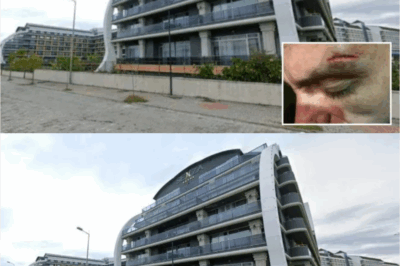In a move that has shocked the tech and automotive industries alike, Elon Musk has finally unveiled what insiders are calling Tesla’s most ambitious and disruptive project to date—a long-rumored, top-secret vehicle that promises to obliterate competition and redefine the future of transportation. After years of cryptic tweets, tight-lipped engineers, and wild speculation, Tesla’s secret project has emerged into the light—and it’s nothing like anyone expected.
Codenamed “Project Omega,” the vehicle was introduced in a surprise announcement at Tesla’s ultra-secure Nevada research facility. Under heavy security and streamed via a limited-access broadcast, Musk stepped onto the stage with a grin and a statement that immediately lit up the internet: “This is the one that changes everything.”
The vehicle, officially named the Tesla Omega, is an all-terrain, self-driving, AI-integrated transport platform designed to operate seamlessly on roads, off-road, in cities, and—most astonishingly—on autonomous aerial routes. In short, it’s not just a car. It’s a convergence of road vehicle, drone, and smart mobility ecosystem, built from the ground up to challenge every assumption about what personal transport can be.
At first glance, the Omega resembles a futuristic hybrid of a sports car, rover, and lightweight aircraft. Sleek but muscular, the body is constructed from Tesla’s new “NanoGraphene-X” composite—a proprietary material that’s stronger than steel, lighter than carbon fiber, and completely recyclable. The design features adaptive aerodynamics, where panels shift in real-time to optimize speed, lift, and stability based on environment and speed.
But what truly sets the Omega apart is what’s inside.

Powered by Tesla’s next-generation ultra-dense battery system—rumored to be capable of over 1,000 miles per charge—the Omega also features a dual-mode propulsion system. For ground use, it employs magnetic-wheel drive with zero turning radius, ideal for urban maneuverability. In aerial mode, four concealed electric turbofans deploy from within the chassis, lifting the vehicle into vertical takeoff capability, much like a drone—but scaled up to fit four adults comfortably.
Yes, you read that right: the Omega can fly.
Musk emphasized that the Omega is not simply a flying car concept—it is a production-ready hybrid transport unit capable of autonomous vertical travel. The vehicle can assess terrain, detect obstacles, and chart vertical escape routes, allowing it to skip traffic or reach remote locations inaccessible by conventional cars. The fusion of AI navigation, Tesla’s Full Self-Driving software, and aerial autonomy represents the most advanced transportation AI ever released to the public.
The Omega isn’t built just for techies or billionaires—it’s aimed, according to Musk, “at anyone who values time, freedom, and clean energy.” With an estimated entry price in the $150,000 range and incentives expected for early adopters in green-friendly regions, Tesla aims to make the Omega a realistic option for adventurous consumers and early adopters across the globe.
Inside, the Omega offers a cockpit unlike anything on the road—or in the air. Gone are physical steering components. Instead, a wraparound digital interface powered by Tesla’s new AI co-pilot, codenamed “Orion,” responds to voice, gesture, and biometric cues. Passengers can command routes, initiate flight mode, or reconfigure the interior layout via touchless interaction. Seating can shift from lounge to work mode, with retractable surfaces, ambient lighting, and smart-glass privacy tinting.
But the Omega isn’t just about luxury and wow-factor—it’s a full leap into sustainable, flexible, autonomous transport. The vehicle generates and stores solar energy through integrated panels on its roof and side flanks. Musk claims this allows the Omega to charge itself even when off-grid, making it a compelling option for exploration, emergency response, and high-tech overlanding.
In a bold statement during the reveal, Musk declared, “With the Omega, we’ve reached the point where the vehicle is not a machine—it’s an extension of your intent. It’s mobility redefined. This is the true convergence of earth and sky travel.”
Reactions from within the industry were immediate and explosive. Automotive experts have called the Omega “a category killer” and “a death knell for companies that have failed to innovate.” Aviation professionals, initially skeptical of the viability of a road-to-air consumer vehicle, admitted that Tesla’s tech appears to have overcome key stability, weight, and control issues that have plagued VTOL (vertical takeoff and landing) designs for decades.
Meanwhile, competitors were caught flat-footed. As news of the Omega spread, stocks for legacy carmakers dipped while Tesla shares surged. Social media platforms exploded with footage of the Omega’s demonstration flights and reaction videos from influencers, engineers, and average consumers alike. Within 12 hours of the reveal, the Omega had over 100 million impressions online, and pre-reservation interest skyrocketed.
Despite the fanfare, the Omega’s path forward isn’t without obstacles. Regulatory approval for autonomous air travel in most countries remains in its infancy. Musk acknowledged this, noting that Tesla is working closely with aviation authorities and expects limited flight permissions in controlled areas initially—such as rural corridors, designated air lanes, and private properties.
Still, that hasn’t dampened enthusiasm. Musk also hinted at future infrastructure integrations, such as Tesla “skyports” that double as charging hubs, lounges, and departure points. These skyports, he suggested, could eventually become as common as gas stations—offering urban lift-off points, intercity air routes, and off-grid landing zones for Omega users.
Environmentalists, meanwhile, praised the Omega’s all-electric system and recyclable materials, though some cautioned that mass adoption of aerial vehicles must be managed responsibly. Urban planners are already speculating how cities might adapt to vehicles like the Omega—rethinking rooftops, air corridors, and land usage.
As for what comes next, Musk left his audience with another characteristic mic-drop: “This is just the beginning. Omega is our first step toward 3D transportation. Roads are optional. Gravity is negotiable.”
The Tesla Omega is more than a car or aircraft—it’s a vision. A leap into a future where personal transport is autonomous, clean, and unconstrained by traditional infrastructure. If even a fraction of what Tesla unveiled is brought to mass production, the Omega could represent the end of conventional vehicles as we know them—and the beginning of an entirely new era in how humanity moves.
News
“BANKRUPT BRITAIN?!” – Labour’s Plan to WATER DOWN Its Already Flimsy Welfare Reforms Could HURL the UK Into TOTAL FINANCIAL MELTDOWN
LABOUR is making a complete mess of welfare. Panicked and driven Left-wards by Reform’s surge, the Government is wobbling on the…
“TURKISH HOTEL TERROR!” – Brit Dad Brutally BEATEN TWICE in Front of His Kids… Family Holiday Spirals into a Living Nightmare
The alleged attackers reportedly had a feared reputation A DAD-OF-TWO said he was attacked twice in front of his kids…
“FED to PIRANHAS!” – 31-Year-Old Mum of 3 Vanishes After Ex’s Savage Revenge… Body Still Missing in Brazil
A MAN was caught on CCTV putting his former wife’s body in the boot of a car before coldly dumping…
“Dinner Party of DEATH!” – You Won’t Believe Erin Patterson’s Gross Confession After Her ‘Killer’ Mushroom Meal Claimed 3 Lives
MUSHROOM cook Erin Patterson who is accused of killing three people with a poisoned beef wellington graphically described how she…
HOLIDAY BLOODBATH! Teen SLASHED to Death with Broken Bottle in Lisbon—UK Tourist (27) DRAGGED Back to Portugal in Dramatic Midnight Extradition
Daniel was reportedly attacked while trying to defend a friend A BRITISH tourist has been arrested and extradited to Portugal…
LIVERPOOL PARADE CARNAGE! 53-Year-Old Driver PLOUGHS into Crowd—47 Injured, 4 Kids Hurt—Police Shout “NOT TERROR!” Fans in SHOCK
Emergency crews arrived to find people lying injured in the road and some trapped under the car FOUR children were…
End of content
No more pages to load












